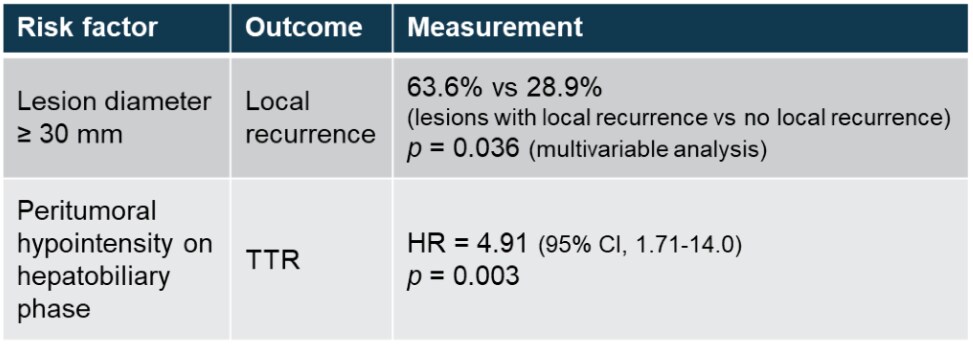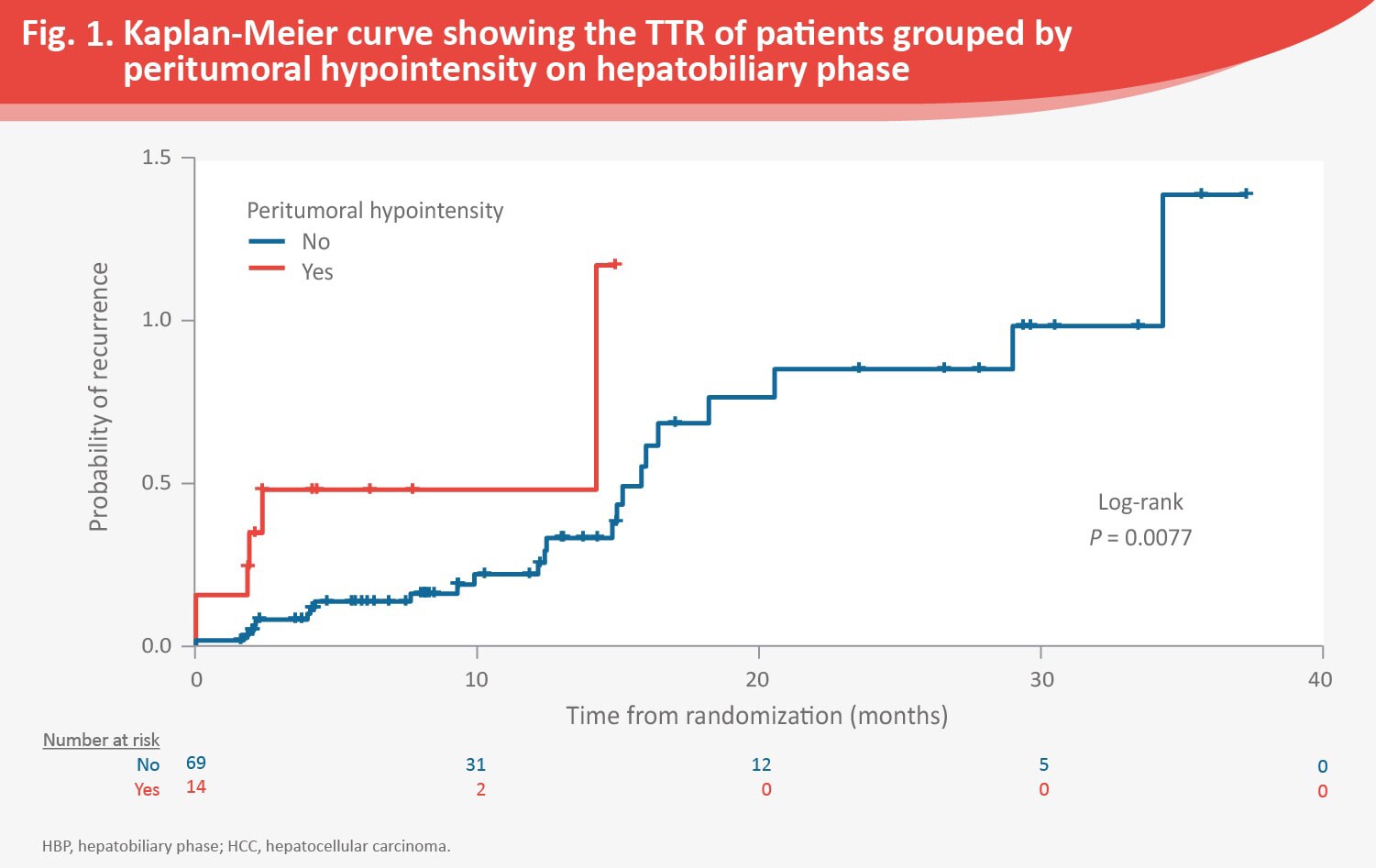Prognostic value of baseline MRI features in patients treated with thermal ablation for hepatocellular carcinoma
Key message: Presence of peritumoral hypointensity on baseline hepatobiliary phase emerges as a predictor for the time-to-recurrence in early-stage hepatocellular carcinoma patients treated with thermal ablation.
The study focused on the prognostic significance of baseline EOB-MRI features for time-to-recurrence (TTR) and local recurrence in early hepatocellular carcinoma (HCC) patients. It examined 88 patients' EOB-MRI images from the SORAMIC trial, where patients underwent thermal ablation followed by sorafenib or placebo. Key MRI image features such as lesion characteristics, tumor capsule, and peritumoral enhancement were evaluated. Results showed 30 patients experienced recurrence, with a median TTR of 16.4 months. Peritumoral hypointensity on hepatobiliary phase was the only significant risk factor for shorter TTR in multivariable analysis (Table. 1; Fig. 1). Larger lesion diameter was a significant risk for local recurrence (Table. 1). The study suggests baseline EOB-MRI can serve as a valuable imaging biomarker for identifying high recurrence risk in early HCC patients undergoing thermal ablation.
Table 1. Table 1. Risk factors associated with local recurrence and shorter TTR


EOB-MRI, gadolinium-ethoxybenzyl-diethylenetriamine pentaacetic acid-enhanced magnetic resonance imaging; HCC, hepatocellular carcinoma; HR, hazard ratio; TTR, time-to-recurrence.
References:
- Osman ¨Ocal, et al. Prognostic value of baseline MRI features in patients treated with thermal ablation for hepatocellular carcinoma. European Journal of Radiology 168 (2023) 111120.
https://pubmed.ncbi.nlm.nih.gov/37806190/


